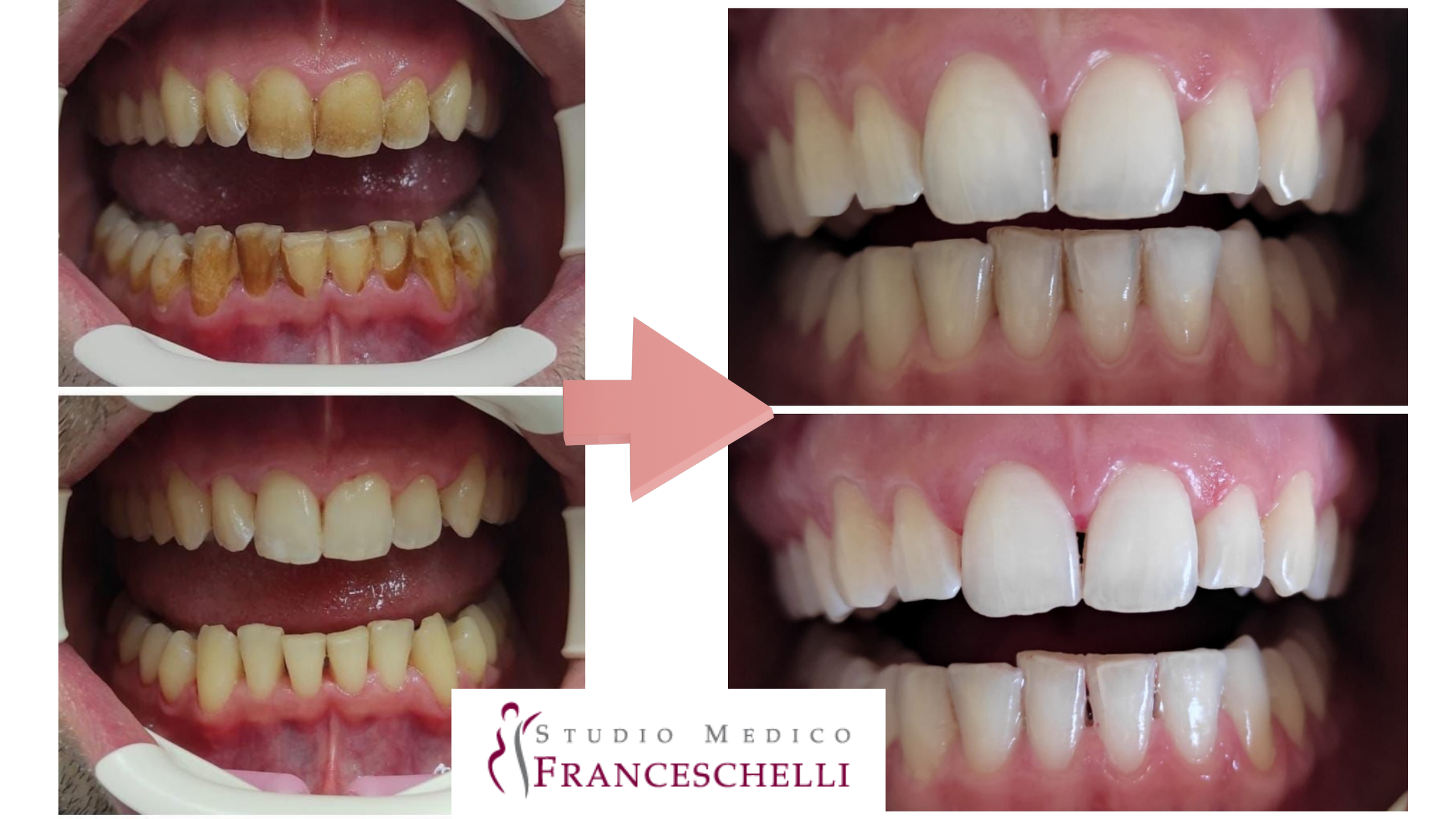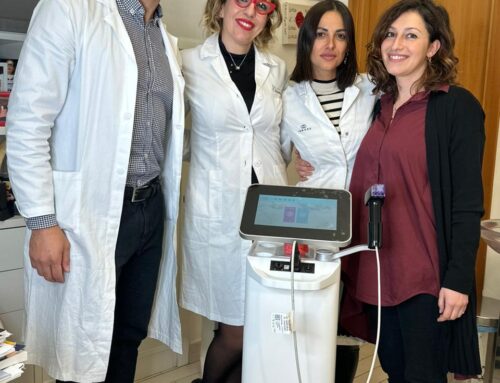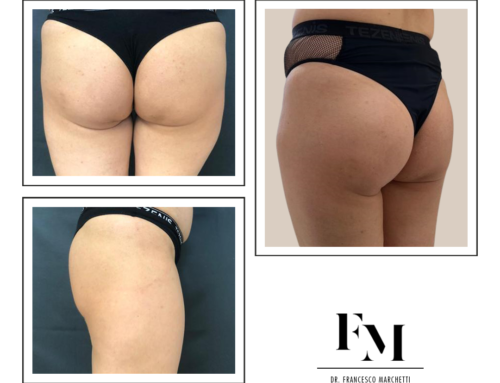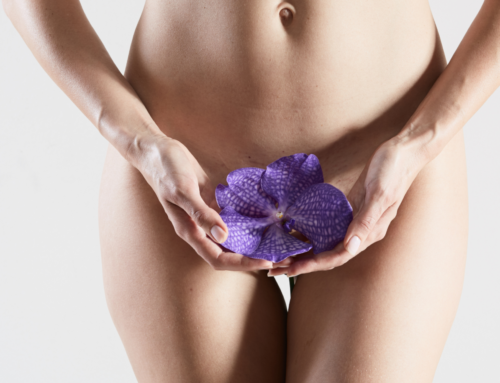Bleaching o sbiancamento dei denti professionale – Come funziona? – Il bleaching (termine inglese che significa “sbiancamento”) è un trattamento estetico professionale, indicato per trattare discromie dentali che possono manifestarsi nel corso della vita di un individuo.
Lo sbiancamento dentale può essere effettuato sia su denti vitali, sia su denti devitalizzati (che si sono scuriti a causa della morte del dente).
CHI FA LO SBIANCAMENTO PROFESSIONALE?
Lo sbiancamento professionale viene effettuato negli ambulatori dentistici, o in centri specializzati, ad opera dell’odontoiatra o dell’igienista dentale.
SBIANCAMENTO VS PULIZIA DEI DENTI
La detartarasi (meglio conosciuta come pulizia dei denti) è una procedura da eseguire necessariamente prima di un trattamento estetico di sbiancamento dentale.
I denti devono essere puliti da tartaro e placca, devono essere rimosse tutte le pigmentazioni esterne e le gengive devono essere rosee e in salute.
Solo dopo aver eseguito la detartarasi, è possibile procedere con il trattamento estetico di sbiancamento.
QUALI PRODOTTI SI USANO PER LO SBIANCAMENTO PROFESSIONALE?
I prodotti sbiancancanti più utilizzati in ambito professionale sono rappresentati da gel a base di perossido di idrogeno al 38% o da gel a base di perossido di carbammide.
Queste sostanze, una volta attivate, rilasciano radicali liberi in grado di penetrare nella struttura del dente. All’interno di esso si innescano reazioni di ossidoriduzione che scompongono le molecole delle macchie in composti più piccoli e incolori.
QUAL E’ LA PROCEDURA DEL BLEACHING?
Dopo aver applicato sulle gengive una diga liquida per proteggerle dal contatto con l’agente chimico, viene distribuito il gel sbiancante sui denti per un tempo variabile, in relazione alla percentuale di perossido di idrogeno in esso contenuto. Il colore dei denti sarà registrato prima e dopo il trattamento.
QUALI SARANNO I RISULTATI?
Nella maggior parte dei casi, si ottengono ottimi risultati, ma non esiste un metodo per sapere quanto saranno bianchi i denti alla fine del trattamento.
Per il mantenimento del risultato ottenuto, è necessario sapere che le 48 ore successive al trattamento sono le più importanti. Come il gel sbiancante è penetrato tra i prismi dello smalto per correggere il colore, così anche il tabacco, il fumo, la nicotina, il caffè, i coloranti alimentari possono penetrare nel dente, vanificando il trattamento appena eseguito.
POSSONO ESSERCI CONTROINDICAZIONI?
Come tutti i trattamenti clinici, lo sbiancamento dentale ha dei rischi e delle limitazioni. Potrebbero verificarsi effetti indesiderati, come irritazione gengivale e ipersensibilità dentinale.
Inoltre, la presenza di carie, tartaro o gengiviti, impongono una preventiva risoluzione del problema prima di effettuare il trattamento cosmetico.
Dott.ssa Cristina Gibilisco – Igienista Dentale
Se vuoi avere altre informazioni, contatta il nostro studio medico estetico a Roma.
Oppure potresti:
- dare un’occhiata agli altri articoli
- approfitta delle nostre promozioni
- scopri i nostri trattamenti
- consultare la pagina sulla nutrizione
- ti serve una visita odontoiatrica?
- scopri di più sui servizi di tricologia





